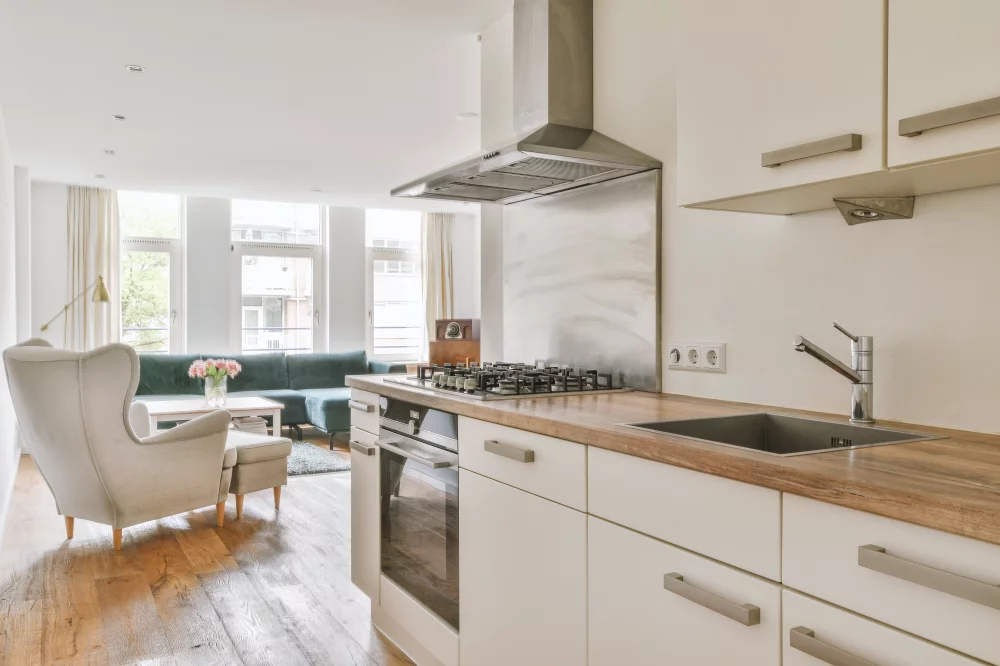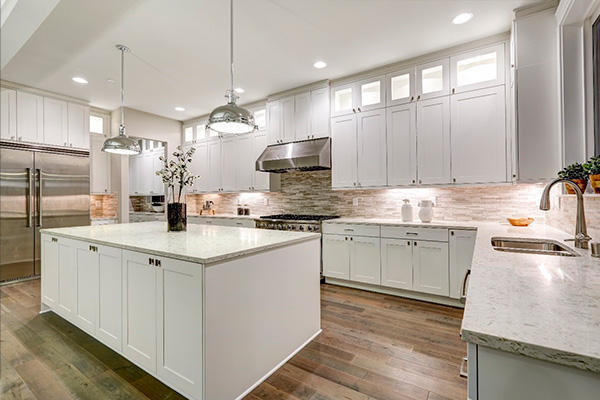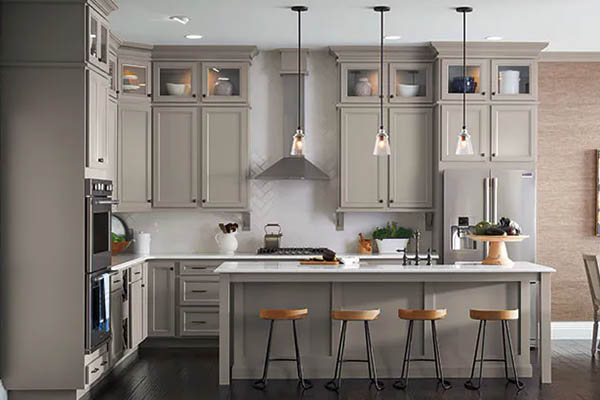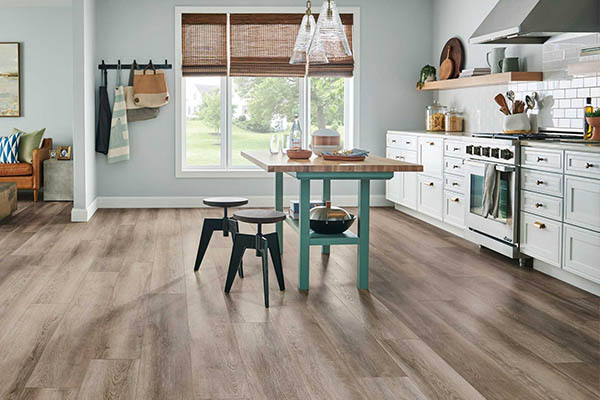LAMINATE countertops PROS and CONS

General information
Laminate is the least expensive countertop option, which can save hundreds and even thousands of dollars. Yet, there is much alarming information on the web regarding its poor quality, low durability, and awful appearance. Let us see if these rumors have any substantial grounds.
Laminate countertops have been on the market for over 70 years and have significantly evolved since their introduction in the 1950s. In simpler terms, laminate boards are made of particle boards that are covered with a layer of kraft paper, decorative paper, and melamine resin, which are then bonded together through high heat and pressure to create a relatively durable surface.
Laminate is sometimes called Formica or Arborite, but these are well-known brand names among many other manufacturers.
As with other materials, there are cons and pros, and longevity may depend on the application area.
Pros of Laminate countertops
- Price: Laminate countertops are the most affordable option.
- Diversity: Laminate countertops come in various colors, decors, and textures, replicating anything from different kinds of woods to all types of natural stones, including granite, soapstone, and marble.
- Maintenance: The outer layer of laminate is non-porous and water-resistant. Spills and stains come off quickly and can be cleaned with dish soap and water or with other standard cleaning solutions.
- Installation: Unlike natural or engineered stone, laminate countertops can easily be transported and installed without professional help and a set of high-end professional tools by an average DIY-er.
Cons of Laminate countertops
- Durability: The top layer of the laminate surface is a very durable material that is resistant to wear and even capable of handling light interaction with sharp objects like unintended knife cuts. Even though they may last for decades, laminate countertops yield to natural tone that can last for up to 100 years with proper maintenance.
- Heat resistance: Laminate countertops are not heat-resistant. Setting hot pans and pots on the surface can cause the material to melt and scorch.
- Moisture: It is essential to keep the water and moisture from getting under the top layer through scratches, cracks, or joints. The particle board underneath the laminated layer may absorb water and moisture, warp, swell and cause the laminate layer to come off. This damage cannot be repaired; the whole board must be replaced.
- Look and feel: New, modern technologies allow the laminated surface to look attractive, realistically replicating natural materials with their beauties and imperfections, like cracks and grains. What cannot be repeated is the feel and atmosphere of natural materials: the enchanting coldness of granite, the warmth, and smell of natural wood, alluring veins of marble.
Conclusion
If budget is a top concern, laminated countertops are a decent, wallet-friendly alternative to natural materials. They come in all kinds of decors and colors and are easy to clean, install, and maintain.



